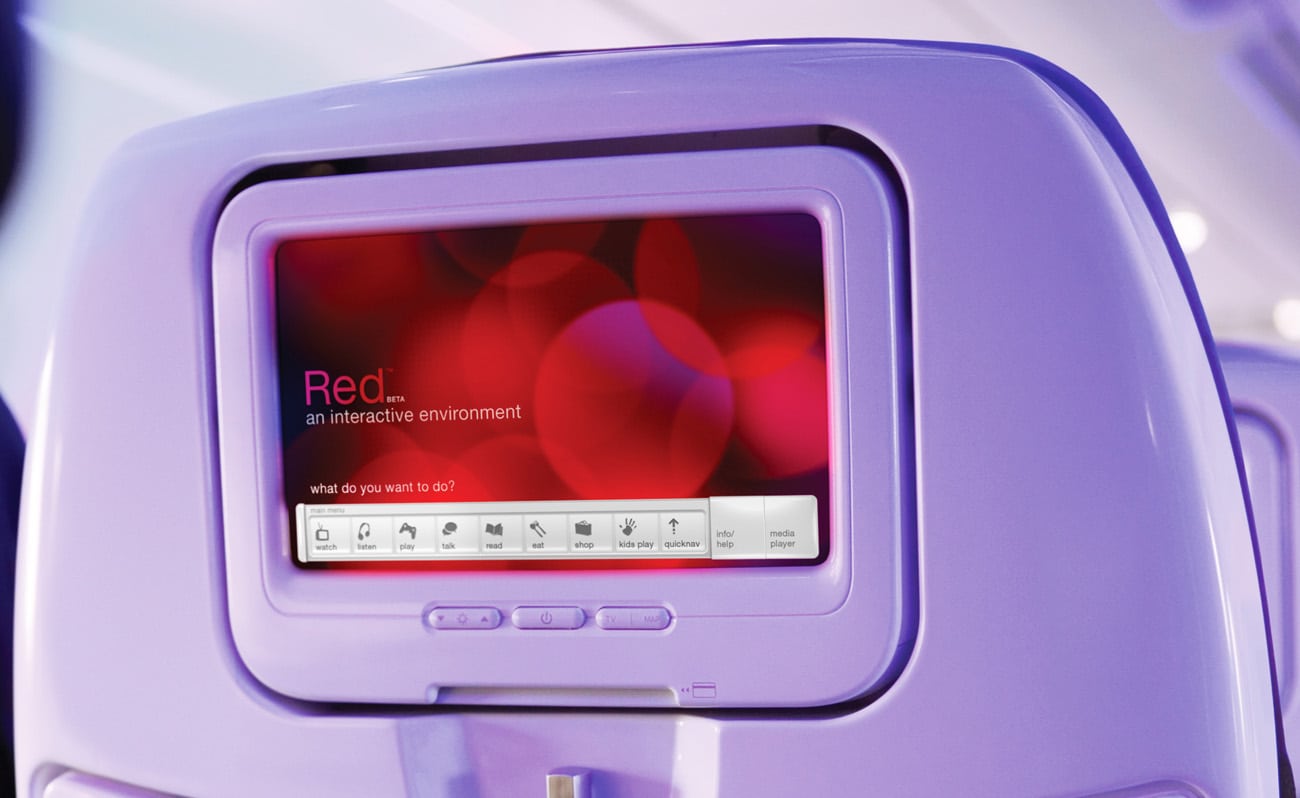Skift Take
The thousands of screens on aircraft, either built-in or brought onboard, offer advertisers and brand partners many ways to reach consumers. With connectivity and advanced IFE systems gathering user data, the skies offer limitless possibilities for targeted campaigns and direct sales.
Following a July announcement, Virgin America has now launched the ViaSat-powered high-speed in-flight Wi-Fi on the first of ten A320s.
The airline has said it will let customers use the service free of charge, during an introductory period, and will then update on fees for service. But how could Virgin America make that expensive connection profitable?
Rival Gogo’s in-flight Wi-Fi service, still offered on the balance of Virgin America’s fleet, is already a paid connection. Virgin America should have no trouble persuading passengers that they have to spend a little to get a lot with this new ViaSat service.
“We have not yet released detailed plans around how we plan to price the product, but ViaSat allows us a great deal more flexibility and control in terms of how we price and share revenue on the product,” Ken Bieler, Director of Product Design and Innovation at Virgin America told Skift. He added that the ViaSat service, “allows us to create a more guest-centric, tailored offering for our flyers—that could include things like discounts for our Elevate frequent flyer members.”
But there are other ways to fund high-speed Wi-Fi so that passengers pay little or nothing. JetBlue, whose Fly-Fi service is also powered by ViaSat, has done the legwork, searching for multiple, viable revenue models to support the technology and its free/paid connection tiers.
When we spoke with Virgin America about applications for the product onboard, we noted that the airline has been paying close attention to its competitor’s various revenue-generating partnerships, and will put a little JetBlue strategy into its Red In-Flight Entertainment, hoping to make some green.
“Down the road, the ViaSat technology opens up a great deal of interesting opportunities to use connectivity to bring more value-added, unique services to travelers via the seat-back Red platform,” said Bieler. “For example, linking a traveler’s Elevate account to the seat-back—so we can remember and suggest preferences, including our on-demand menu, music or TV options, or tailored ads, apps that run on the seat-back, and more.”
These potentially revenue-generating projects are made possible by the enhancements of ViaSat’s streaming-speed connectivity, and can also be offered on the airline’s custom Wi-Fi portal, direct to passenger’s personal devices.
This represents an opportunity for growth in a developing trend for airlines to better position their brands, profit on brand cross-over, and bring both traditional and new advertising opportunities onboard. If well developed, these could go beyond paying for the Wi-Fi service, straight to the bottom line.
It has the potential to become an elegant blend of passenger experience enhancement, brand positioning, and long-term revenue stream development. The goal would be for airlines to use this new technology for lifestyle branding initiatives and brand partner ancillary sales, as a bridge to product differentiation and profits.
Opportunities can range from offering premium content, to true on-board retail that mirrors our on-line shopping habits on the ground, to partner bookings for hotels, rental cars, tours and restaurants while en-route to the destination. There are also the active spot opportunities: ads placed by partner brands can link directly to partner sites through high-speed Wi-Fi on-board.
The aviation industry is only beginning to explore the many ways it can profit from happy connected passengers. JetBlue’s recent partnership with Amazon, offering Amazon Prime subscription services, stands out because it also satisfies passengers’ insatiable need for variety in onboard entertainment.
Netflix has an indirect presence onboard, with streaming speeds letting passengers enjoy their subscriptions on their own devices, but the company has recently hinted that it might want a more formal In-Flight Entertainment connection.
“We are seeing the next-generation of Wi-Fi in planes, so that’s a direction. The other direction is that we can fit the whole of Netflix into a box that’s this size [about 1 square foot], that can fit on a plane, so why not pursue that?” Netflix’s chief product officer Neil Hunt told Digital Spy this week. “Instead of having their existing rack of equipment that shows the crappy titles that you typically find on a plane, let’s put Netflix on there instead, or as well.”
Of the new ViaSat connection, Virgin America’s Bieler told Skift, “The idea behind our airline has always been to reinvent the flight experience for the better, by offering travelers more control, more content, more interactivity and more of the choices they actually want.”
If it also offers brand partners a unique opportunity to target engaged consumers, more’s the better.
The Daily Newsletter
Our daily coverage of the global travel industry. Written by editors and analysts from across Skift’s brands.
Have a confidential tip for Skift? Get in touch
Tags: amenities, in-flight, viasat, virgin america, wifi
Photo credit: With high-speed connectivity, Virgin America's Red In-Flight Entertainment has new connections to revenue streams. Virgin America
